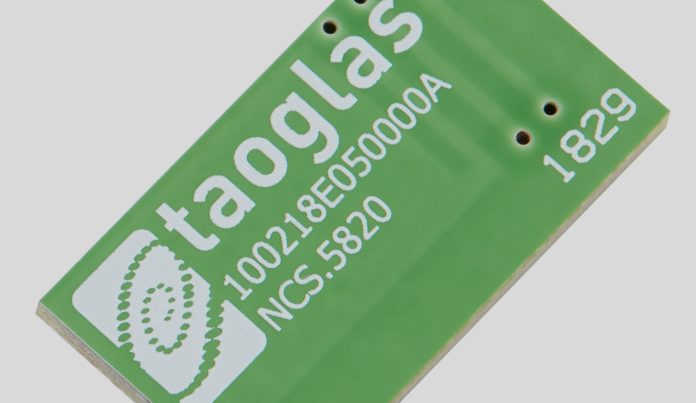A trio of diminutive multi-band low-power wide-area (LPWA) antennas has been announced at MWC Americas, promising further miniaturisation of IoT devices, alongside international roaming for applications like asset tracking.
A new range of antennas from Irish antenna company Taoglas, suitable for NB-IoT networks, as well as unlicensed LPWA equivalents like LoRa and Sigfox, includes the ‘world’s smallest ceramic NB-IoT antenna’. It range of three Extensis antennas pack high power into small packages, and promise faster and cheaper scalability of solutions, it said.
The miniaturisation of IoT devices, notably on licensed LPWA networks, has been an early feature of the MWC showcase in Los Angeles so far. Israeli IoT chip maker Altair has teamed up with US based Ethertronics to develop a new small antenna technology to enable even smaller IoT and wearable devices.
Meanwhile, German IoT module maker Giesecke+Devrient (G+D) has announced work with AT&T and Altair to embed SIMs into IoT hardware to also reduce the footprint and ease the development of scalable IoT solutions.
Taoglas’s new Extensis range of NB-IoT antennas includes the NCP.5820, NCS.5820, and FXUB64.
The first of these (880-960 MHz) and 20 (791-862 MHz), as well as Band 5 (824-894 MHz), allowing IoT devices like asset trackers to work across different regions and different carriers. Its low profile (2mm) and small footprint (14.1mm x 8.3mm) make it the world’s smallest NB-IoT antenna, said Taoglas.
The second, the larger NCS.5820 antenna, is a surface-mount onboard antenna that also supports Bands 5, 8 and 20. Its low-profile (1.6 mm) and small footprint (11mm x 20 mm) allows the NCS.5820 to be integrated into even the smallest of IoT devices.
The FXUB64 is a flexible ultra-wideband polymer antenna, with an ultra thin profile (130mm x 20mm x 30*0.2mm), designed for all working frequencies in the 600-3000 MHz spectrum, covering all cellular bands, plus the 2.4GHz Wi-Fi, ISM, and AGPS band. It is also the first to include LTE band 71 as an off-the-shelf antenna option.
The antenna is compliant to T-Mobile’s new 600MHz over-the-air requirements when properly integrated into the customer’s device.
Taoglas has also announced a new antenna design that will deliver significantly increased antenna performance, particularly in devices with shorter ground planes. The move will allow allowing developers to bring to market a wider range of smaller devices that would not otherwise meet carrier certification requirements.
Taoglas Boost uses a new technique to alter the electrical delay in the ground plane to improve efficiency at the lower frequencies (600MHz to 1000MHz), typically used for cellular applications. The modification can be implemented in the “keep-out” area of the antenna, the area on the host circuit board reserved for antenna placement.
A tuning feature allows for quick optimisation. The result is an up to 2dB of antenna efficiency improvement on the same ground plane length compared to traditional technology.
Taoglas Boost is available with the NCP.5820 and NCS.5820.
The device size versus performance dilemma has long been an issue in the IoT industry. It affects aesthetics, power consumption, costs and use cases.
Due to the migration to 4G cellular networks, additional frequency bands are used by network providers to increase service level speeds and throughput. Many IoT devices require antennas to send and receive efficiently at all bands to be globally compliant, without the need to change antennas based on region.
Devices may also require 2G/3G fall-back. Traditionally this is achieved by increasing the ground-plane length of the board the antenna is mounted on. As a result, many devices are larger than required or practical for the applications they serve.
Jeff Shamblin, vice president of engineering at Taoglas, said: “This patent-pending breakthrough, developed by our team of engineers, tricks the antenna into seeing a longer ground plane, hence increasing antenna efficiency. Taoglas Boost is provided at no additional cost for use with Taoglas antennas, providing our customers 1 or more dBs of performance for free.”
Ronan Quinlan, co-chief at Taoglas, commented: “NB-IoT is emerging as a go-to LPWAN option for applications that need to support a large number of devices, especially in challenging environments such as indoors or underground.
“The incredibly low profiles and small footprints of the Extensis antennas along with their multi-band capabilities make them an excellent choice for device designers who need to shrink their devices without sacrificing performance. Having access to three bands on one antenna also allow them to plan for global deployments.”

